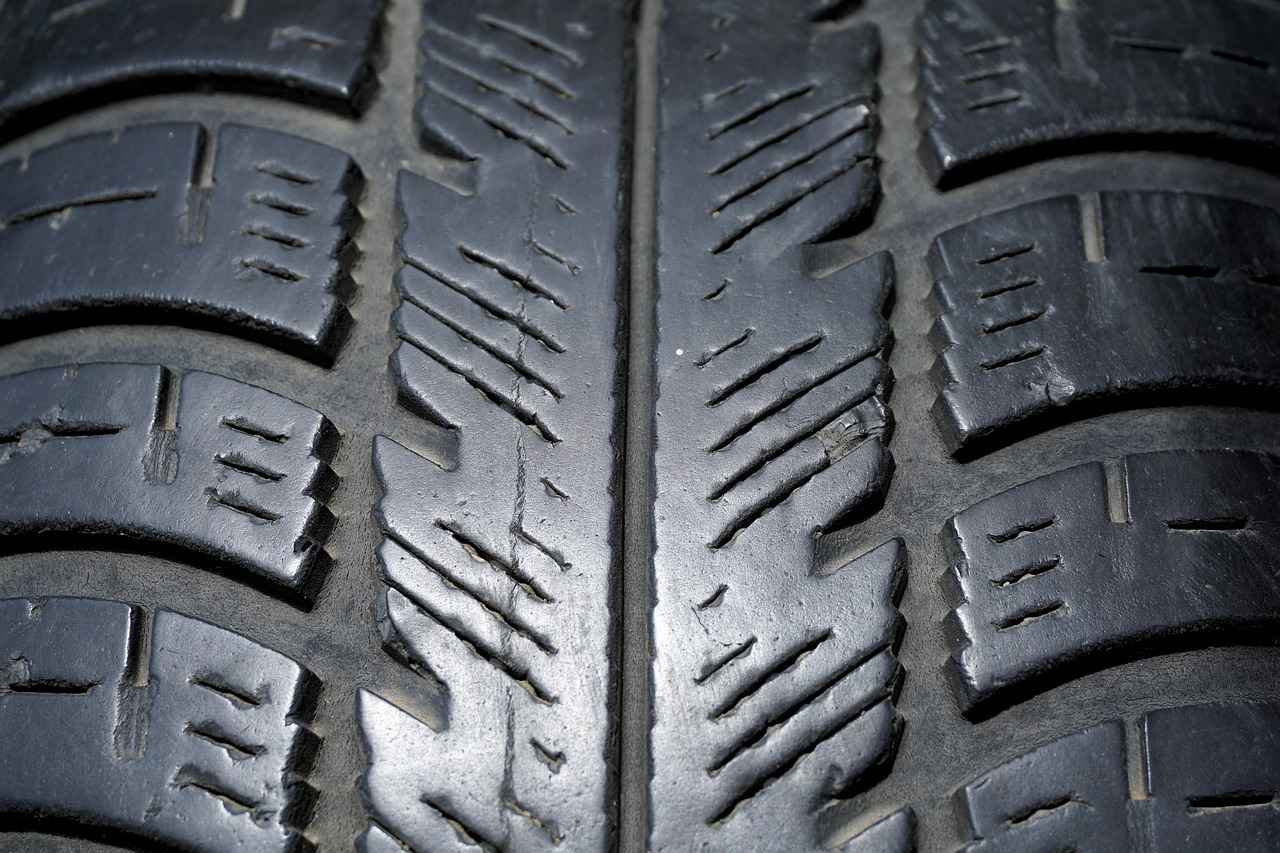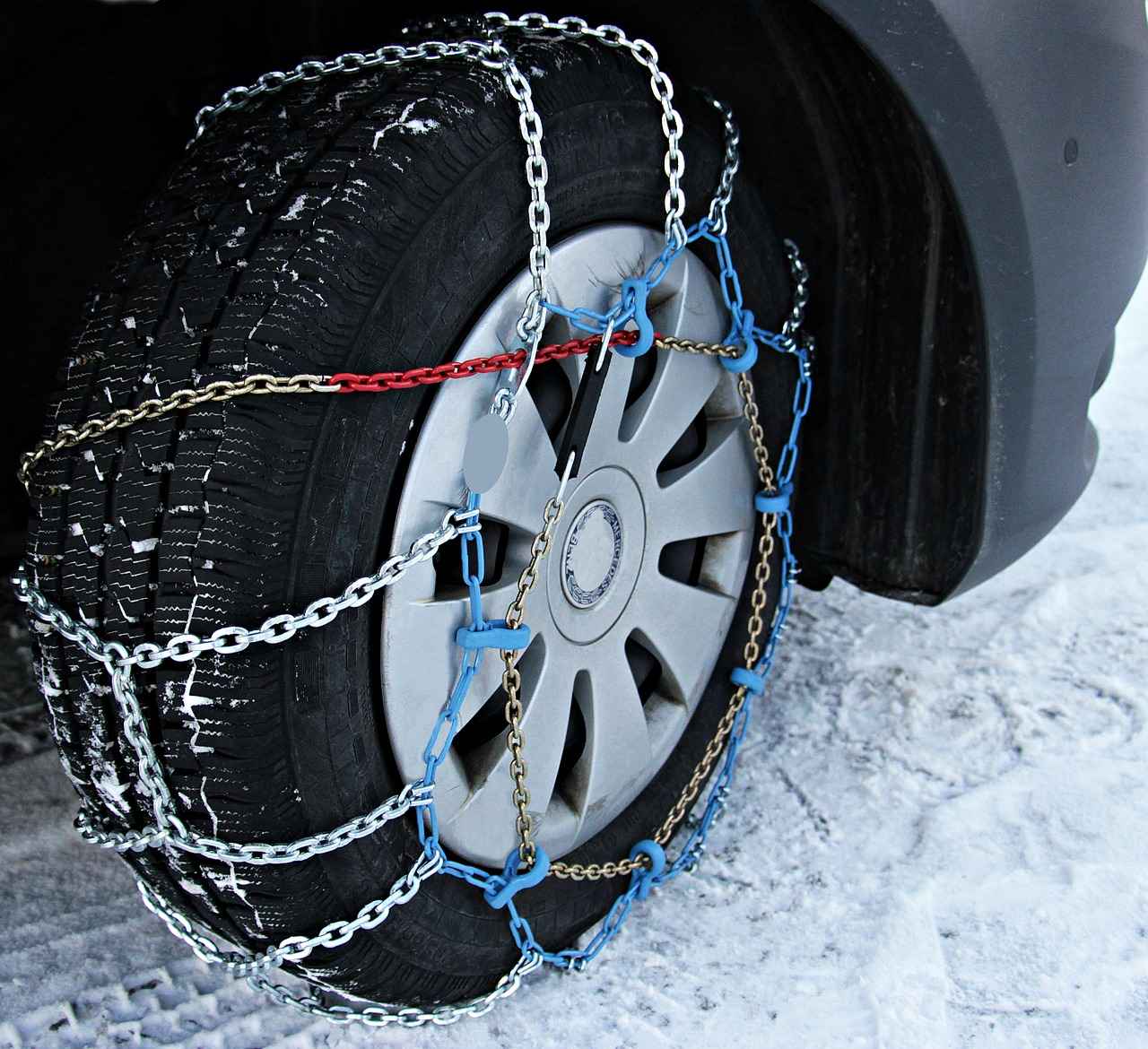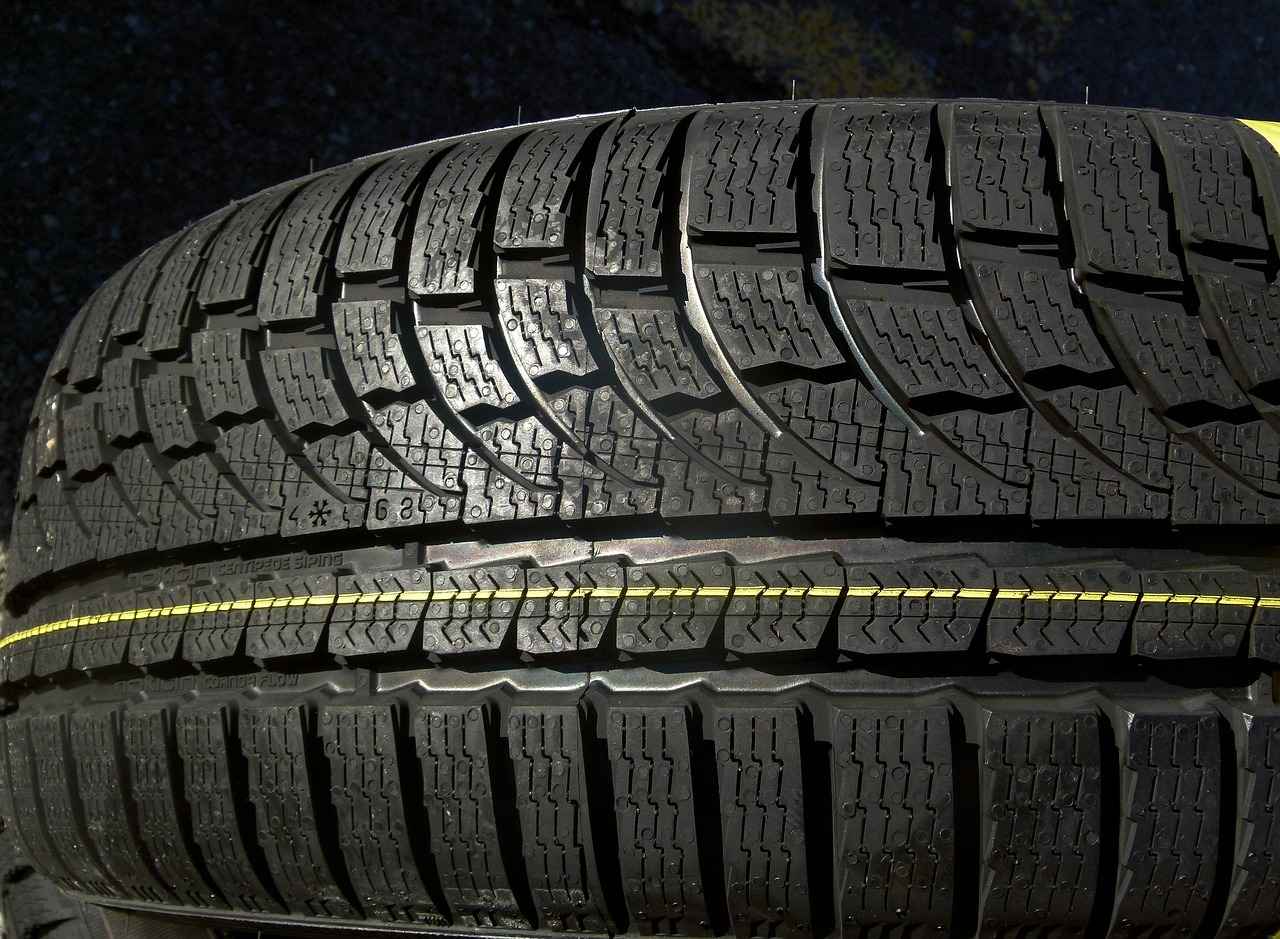This article provides a detailed guide on resetting the tire pressure light on a Honda Accord, ensuring safety and optimal performance for your vehicle. Proper tire maintenance is crucial not only for the longevity of your tires but also for the overall safety of your driving experience.
Understanding the reasons behind the tire pressure light activation is crucial for effective troubleshooting and maintenance of your Honda Accord. Common causes include:
- Low Tire Pressure: This is the most common reason. Tires lose pressure due to temperature changes or slow leaks.
- Temperature Fluctuations: Changes in weather can affect tire pressure. Cold weather can cause pressure to drop.
- Tire Damage: Punctures or other damages can lead to air loss, triggering the light.
- TPMS Malfunction: The Tire Pressure Monitoring System itself may malfunction, causing false alerts.
Regularly checking tire pressure is essential. Here’s how to accurately measure tire pressure using a gauge:
1. Purchase a reliable tire pressure gauge.2. Remove the valve cap from the tire.3. Press the gauge onto the valve stem quickly.4. Read the pressure displayed on the gauge.5. Replace the valve cap securely.
Resetting the tire pressure light is a straightforward process. Follow these steps:
The dashboard features a reset button that allows you to clear the tire pressure light. To locate and use this button:
- Turn on the ignition without starting the engine.
- Locate the TPMS reset button usually found beneath the steering wheel.
- Press and hold the button until the tire pressure light blinks three times, then release it.
For newer models, the tire pressure light can be reset through the vehicle’s menu system. Here’s how:
- Turn on the ignition.
- Navigate to the Settings menu on the display screen.
- Select Tire Pressure and then Reset.
Sometimes, the tire pressure light may indicate a more significant problem. If the light remains on after resetting, or if you notice unusual tire wear or handling issues, it’s essential to consult a professional mechanic for assistance.
Resetting the tire pressure light can be tricky. Here are some common errors to avoid:
- Ignoring the root cause of low tire pressure before resetting.
- Failing to check all tires, including the spare.
- Not allowing enough time for the system to recalibrate after resetting.
Maintaining proper tire pressure is vital for safety and fuel efficiency. Here are some best practices:
- Regular Tire Inspections: Conduct inspections at least once a month.
- Seasonal Tire Pressure Adjustments: Adjust tire pressure according to seasonal variations.
Proper tire maintenance extends the lifespan of your tires and enhances vehicle performance. Benefits include:
- Improved fuel efficiency.
- Enhanced safety and handling.
- Reduced risk of tire blowouts.
Tire Pressure Monitoring Systems are crucial for safety. They provide real-time data on tire pressure, helping drivers maintain optimal inflation levels. Familiarize yourself with how TPMS works and its importance in modern vehicles.
Addressing common queries can help clarify concerns regarding tire pressure lights and their implications for vehicle safety and maintenance. Here are some frequently asked questions:
- What should I do if the tire pressure light comes on? Always check your tire pressure first.
- Can I drive with the tire pressure light on? It’s not advisable; check your tires immediately.

What Causes the Tire Pressure Light to Illuminate?
Understanding the reasons behind the tire pressure light activation is crucial for effective troubleshooting and maintenance of your Honda Accord. The tire pressure monitoring system (TPMS) is designed to alert drivers when tire pressure falls below a safe threshold. However, there are several factors that can trigger this warning light, and knowing them can help you address potential issues promptly.
- Low Tire Pressure: The most common reason for the tire pressure light to illuminate is simply low tire pressure. This can occur due to natural air loss over time, punctures, or leaks.
- Temperature Changes: Tire pressure can fluctuate with temperature changes. For every 10°F drop in temperature, tire pressure can decrease by about 1 PSI. This is particularly important to note during seasonal transitions.
- Overinflation: Conversely, overinflated tires can also trigger the light. If tires are inflated beyond the manufacturer’s recommended pressure, it can lead to uneven wear and potential blowouts.
- TPMS Malfunction: Sometimes, the tire pressure monitoring system itself may malfunction. This could be due to a faulty sensor or a dead battery in the sensor, causing false warnings.
- Recent Tire Changes: If you have recently changed or rotated your tires, the TPMS may need to be reset. Failing to do so can lead to confusion and unnecessary alerts.
- Heavy Loads: Carrying a heavy load can affect tire pressure. Make sure to adjust your tire pressure according to the weight you are carrying, as this can prevent the light from turning on.
Each of these factors not only affects the tire pressure light but also impacts your vehicle’s overall safety and performance. Regularly checking your tire pressure and being aware of these potential causes can help you maintain your Honda Accord effectively.
To ensure optimal performance, it is essential to perform regular tire inspections and maintain proper tire pressure. This proactive approach can prevent unexpected issues and enhance your driving experience. If the tire pressure light remains illuminated after checking and adjusting your tire pressure, it is advisable to consult a professional mechanic. They can diagnose any underlying issues with the TPMS or other components of your vehicle.
In summary, understanding the various reasons behind the tire pressure light activation is key to maintaining your Honda Accord. By staying informed and proactive, you can ensure your vehicle remains safe and efficient on the road.

How to Check Tire Pressure on Honda Accord?
Maintaining proper tire pressure is crucial for the safety and performance of your Honda Accord. Regular checks can prevent uneven tire wear, improve fuel efficiency, and ensure a smooth ride. In this section, we will explore the essential steps to accurately measure tire pressure using a gauge, ensuring your vehicle remains in top condition.
Checking tire pressure should be a routine part of your vehicle maintenance. Under-inflated tires can lead to reduced fuel efficiency, increased tire wear, and a higher risk of tire blowouts. Conversely, over-inflated tires can cause a harsh ride and reduce traction. To achieve optimal performance, it’s essential to regularly monitor and adjust your tire pressure.
- Gather Necessary Tools: You will need a reliable tire pressure gauge. These can be digital or analog, and both types provide accurate readings.
- Check the Recommended Pressure: Before you start, locate the recommended tire pressure for your Honda Accord. This information is usually found on a sticker inside the driver’s door or in the owner’s manual.
- Ensure Tires are Cold: For the most accurate reading, check tire pressure when the tires are cold, typically after the vehicle has been parked for at least three hours.
- Remove Valve Cap: Unscrew the valve cap on the tire you wish to check and set it aside in a safe place.
- Press the Gauge onto the Valve Stem: Firmly press the tire pressure gauge onto the valve stem. You should hear a brief hissing sound as air escapes; this is normal. Ensure the gauge is pressed down straight to avoid inaccurate readings.
- Read the Gauge: Check the reading on the gauge. If it’s below the recommended pressure, you will need to inflate the tire; if it’s above, you may need to release some air.
- Inflate or Deflate as Needed: Use an air compressor to inflate the tire if it’s low. If the tire is over-inflated, press the valve stem to release air until it reaches the desired level.
- Replace the Valve Cap: Once the pressure is adjusted, securely replace the valve cap to prevent dirt and moisture from entering.
To ensure your tires remain in good condition, consider the following best practices:
- Regular Checks: Aim to check your tire pressure at least once a month and before long trips.
- Seasonal Adjustments: Be aware that temperature changes can affect tire pressure. It’s advisable to check and adjust tire pressure with changing seasons.
- Visual Inspections: Regularly inspect your tires for signs of wear, damage, or irregularities. This can help catch potential issues early.
By following these steps and best practices, you can ensure that your Honda Accord’s tires are always at the optimal pressure, contributing to your vehicle’s performance and safety.
Using a Tire Pressure Gauge
A tire pressure gauge is an essential tool for every vehicle owner, especially for those who prioritize safety and performance. Understanding how to use this simple yet effective device can significantly enhance your driving experience and prolong the life of your tires.
A tire pressure gauge is a device designed to measure the air pressure inside your tires. Maintaining the correct tire pressure is crucial for optimal vehicle performance, fuel efficiency, and safety. Under-inflated tires can lead to poor handling, increased tire wear, and even blowouts, while over-inflated tires can result in a harsh ride and reduced traction.
Using a tire pressure gauge is straightforward. Follow these steps for accurate readings:
- Gather Your Tools: You will need a tire pressure gauge, which can be digital or analog. Ensure that your tires are cold for the most accurate reading.
- Remove the Valve Cap: Locate the valve stem on your tire and remove the cap. Place it in a safe location to avoid losing it.
- Insert the Gauge: Press the tire pressure gauge onto the valve stem firmly. For digital gauges, the reading will display automatically. For analog gauges, you will see a needle indicating the pressure.
- Read the Pressure: Check the reading on your gauge. It is essential to compare this with the recommended tire pressure for your vehicle, which can usually be found on a sticker inside the driver’s door or in the owner’s manual.
- Adjust Tire Pressure: If the pressure is too low, add air until it reaches the recommended level. If it’s too high, release some air until you reach the desired pressure.
- Replace the Valve Cap: Once you have finished, replace the valve cap securely to prevent dirt and moisture from entering.
Each vehicle has a specific tire pressure recommendation, which is usually measured in pounds per square inch (PSI). It is crucial to adhere to these recommendations to ensure safety and performance. Regularly checking your tire pressure, especially before long trips or seasonal changes, can help maintain optimal tire health.
Utilizing a tire pressure gauge offers numerous benefits:
- Enhanced Safety: Properly inflated tires provide better handling and braking, reducing the risk of accidents.
- Improved Fuel Efficiency: Maintaining the correct tire pressure can lead to better fuel economy, saving you money in the long run.
- Extended Tire Life: Regular monitoring can prevent uneven tire wear, prolonging the lifespan of your tires.
- Environmental Impact: Well-maintained tires contribute to reduced CO2 emissions and lower fuel consumption.
To ensure accurate readings, avoid these common mistakes:
- Not checking tire pressure when tires are cold.
- Failing to replace the valve cap after checking.
- Using a faulty or inaccurate gauge.
By mastering the use of a tire pressure gauge, you can significantly enhance your vehicle’s performance and safety. Regularly monitoring your tire pressure is a simple yet effective way to ensure that your tires remain in optimal condition, allowing for a smoother and safer driving experience.
Understanding Recommended Tire Pressure
Understanding the correct tire pressure for your vehicle is essential for safety, fuel efficiency, and overall performance. Each vehicle, including the Honda Accord, has specific tire pressure recommendations that can vary based on the model year and tire specifications. In this section, we will discuss how to find the correct tire pressure for your Honda Accord and the importance of adhering to these recommendations.
The first step in ensuring your Honda Accord has the proper tire pressure is to locate the recommended tire pressure information. This information can typically be found in three primary locations:
- Owner’s Manual: Your Honda Accord’s owner manual contains detailed specifications, including the recommended tire pressure for both front and rear tires.
- Driver’s Side Door Jamb: Open the driver’s side door and look for a sticker on the door jamb. This sticker usually lists the recommended tire pressures along with other important information.
- Fuel Filler Cap: Some models also have tire pressure information located inside the fuel filler cap.
Maintaining the correct tire pressure is crucial for several reasons:
- Safety: Under-inflated tires can lead to blowouts, while over-inflated tires may reduce traction and increase the risk of skidding.
- Fuel Efficiency: Properly inflated tires can improve fuel efficiency, saving you money at the pump.
- Tire Longevity: Maintaining the correct pressure can help extend the lifespan of your tires, reducing the need for premature replacements.
To ensure your tires are inflated to the recommended levels, follow these steps:
- Purchase a reliable tire pressure gauge. Digital gauges are often easier to read than analog ones.
- Check the tire pressure when the tires are cold, ideally before driving.
- Remove the valve cap from the tire, press the gauge onto the valve stem, and take the reading.
- Compare the reading to the recommended pressure and adjust accordingly.
If your tire pressure is too low, you can inflate the tires using an air compressor. Conversely, if the pressure is too high, you can release some air until you reach the recommended level. Always check the pressure again after making adjustments.
It is advisable to check your tire pressure:
- At least once a month.
- Before long trips.
- Whenever you notice the tire pressure light on your dashboard.
By understanding the recommended tire pressure for your Honda Accord and checking it regularly, you can ensure a safer driving experience and enhance the performance of your vehicle.

Steps to Reset the Tire Pressure Light
Resetting the tire pressure light on your Honda Accord is essential for maintaining optimal vehicle performance and safety. If this light is illuminated, it can indicate that tire pressure is either too low or too high. Fortunately, resetting the light is a straightforward process. Follow these detailed steps to ensure your tire pressure light is reset correctly.
- Vehicle Owner’s Manual: Always refer to your manual for specific instructions related to your model.
- Tire Pressure Gauge: This tool is necessary to check the actual tire pressure before resetting the light.
- Inflation Equipment: Ensure you have an air compressor or access to a service station to adjust tire pressure as needed.
- Check Tire Pressure: Before resetting the light, it’s crucial to ensure that all tires are inflated to the recommended pressure. Use a tire pressure gauge to measure each tire’s pressure. The recommended PSI can typically be found on the driver’s side door jamb or in the owner’s manual.
- Adjust Tire Pressure: If any tire is under-inflated or over-inflated, adjust the pressure accordingly. This step is vital, as resetting the light without correcting the tire pressure will not resolve the underlying issue.
- Turn on the Ignition: Insert your key into the ignition and turn it to the “On” position without starting the engine. This action powers up the vehicle’s electrical systems.
- Locate the TPMS Reset Button: Depending on the model year of your Honda Accord, the reset button may be located under the steering wheel, in the glove compartment, or on the dashboard. Refer to your owner’s manual if you have difficulty finding it.
- Press and Hold the Reset Button: Press and hold the TPMS reset button until the tire pressure light blinks three times. This indicates that the system is resetting. Release the button after the third blink.
- Start the Engine: After resetting, start the engine and allow the vehicle to run for a few minutes. This allows the system to recalibrate and check the tire pressures.
- Check the Tire Pressure Light: After a short drive, check if the tire pressure light has turned off. If it remains illuminated, repeat the steps or consult a mechanic.
For many Honda Accord models, the dashboard provides a simple interface for resetting the tire pressure light. Look for the TPMS button near the steering wheel. This button is designed for easy access and quick resets.
In newer models, you can reset the tire pressure light through the vehicle’s menu system. Follow these steps:
- Access the Settings menu on your dashboard display.
- Navigate to the Tire Pressure Monitoring System option.
- Select the Reset option and confirm your choice.
By following these steps, you can ensure that your tire pressure light is effectively reset, allowing for safer driving and optimal vehicle performance. Regular maintenance of your tire pressure not only enhances safety but also improves fuel efficiency and extends the lifespan of your tires.
Using the Honda Accord Dashboard
The Honda Accord is known for its reliability and performance, but like any vehicle, it requires regular maintenance to ensure optimal functionality. One of the essential aspects of maintaining your Accord is managing the tire pressure light, which can illuminate for various reasons. Understanding how to reset this light is crucial for your vehicle’s safety and efficiency.
The dashboard of your Honda Accord features a reset button specifically designed to clear the tire pressure light. This button is typically located on the left side of the steering wheel or near the instrument panel, depending on the model year. To effectively use this button, follow these steps:
- Start your vehicle: Turn on the ignition without starting the engine. This will power up the dashboard.
- Locate the reset button: Look for a button labeled “TPMS” or “Tire Pressure” on your dashboard. It may also be represented by a tire icon.
- Press and hold the button: Once located, press and hold the reset button for a few seconds until you see the tire pressure light blink and then turn off.
- Check tire pressure: After resetting, it’s advisable to check your tire pressure to ensure all tires are inflated to the recommended levels.
It’s important to note that if the light does not turn off after resetting, there may be an underlying issue with your tire pressure monitoring system (TPMS) or the tires themselves. In such cases, consulting a professional mechanic is recommended.
The tire pressure light serves as an alert system for drivers, indicating that one or more tires may be under-inflated or over-inflated. Maintaining proper tire pressure is vital for several reasons:
- Safety: Under-inflated tires can lead to blowouts and loss of control, while over-inflated tires may cause uneven wear and reduced traction.
- Fuel Efficiency: Properly inflated tires improve fuel economy, saving you money at the pump.
- Longevity: Maintaining the correct tire pressure extends the lifespan of your tires, reducing the frequency of replacements.
For newer Honda Accord models, the tire pressure light can also be reset through the vehicle’s menu system. Here’s how:
- Access the menu: Use the buttons on your steering wheel to navigate the vehicle settings on the dashboard display.
- Select ‘TPMS Calibration’: Find the option for tire pressure monitoring or calibration.
- Follow the prompts: Confirm the reset by following the on-screen instructions.
By familiarizing yourself with these processes, you can ensure that your Honda Accord remains in peak condition, providing you with a safe and enjoyable driving experience.
Using the Honda Accord Menu System
For newer Honda Accord models, resetting the tire pressure light can be accomplished through the vehicle’s advanced menu system. This feature enhances user convenience and ensures that drivers can easily manage their vehicle’s settings without needing specialized tools or extensive knowledge. Below, we provide a step-by-step guide to help you navigate the menu effectively and reset the tire pressure light.
- Step 1: Start Your Vehicle
- Step 2: Access the Menu
- Step 3: Navigate to Settings
- Step 4: Find Tire Pressure Settings
- Step 5: Reset the Tire Pressure Light
- Step 6: Confirm the Reset
Begin by turning on your Honda Accord. You do not need to start the engine; simply turning the ignition to the “ON” position is sufficient.
Locate the menu button on your dashboard or steering wheel. This button may vary in location depending on the model year. Press it to open the vehicle settings menu on your display screen.
Using the navigation buttons or touchscreen, scroll through the menu options until you find the Settings section. This is typically represented by a gear icon.
Within the Settings menu, look for Tire Pressure Monitoring System (TPMS) or a similar option. Select this to access tire pressure settings.
Once in the TPMS section, you should see an option to Reset Tire Pressure Light. Select this option, and follow any prompts that appear on the screen.
After confirming the reset, the tire pressure light should turn off. It’s advisable to check your tire pressures afterward to ensure they are at the recommended levels.
Remember, if the tire pressure light remains on after following these steps, it could indicate an underlying issue with the tire pressure monitoring system or an actual tire pressure problem. In such cases, further investigation is necessary.
Using the Honda Accord menu system not only simplifies the process of resetting the tire pressure light but also enhances your overall driving experience. Familiarizing yourself with the menu can lead to better vehicle management and maintenance.
For drivers who may not be tech-savvy, it is advisable to consult the vehicle’s owner manual or seek assistance from a knowledgeable friend or a professional mechanic. Ensuring that the tire pressure light is reset correctly is essential for maintaining optimal vehicle performance and safety.

When to Seek Professional Help?
When it comes to vehicle maintenance, understanding the indicators of potential issues is crucial for safety and performance. One such indicator is the tire pressure light on your Honda Accord. While it often signals a simple problem, such as low tire pressure, there are instances when it may indicate a more significant concern that requires professional attention. This section will explore when to seek professional help regarding the tire pressure light and how to identify the signs that indicate a more serious issue.
The tire pressure light can illuminate for various reasons, but not all of them are benign. Here are some critical signs to watch for:
- Continuous Illumination: If the tire pressure light remains on even after you have checked and adjusted the tire pressures, this could indicate a malfunction in the Tire Pressure Monitoring System (TPMS).
- Flashing Light: A flashing tire pressure light is a serious warning. It often signifies a malfunction within the TPMS itself, which requires immediate attention from a professional.
- Unusual Tire Wear: If you notice uneven wear patterns on your tires, this could indicate alignment issues or other underlying problems that a mechanic should assess.
- Vibration or Noise: If your vehicle is vibrating or making unusual noises while driving, it could be linked to tire issues, necessitating expert evaluation.
Consulting a professional mechanic is essential when you encounter persistent issues with the tire pressure light. Mechanics have the expertise and tools to diagnose problems accurately. Here are some common issues that may require professional intervention:
- TPMS Malfunction: If your TPMS is not functioning correctly, a mechanic can perform a diagnostic test to identify the issue and recommend repairs or replacements.
- Leaking Tires: A slow leak can be challenging to detect without specialized equipment. A professional can determine if your tires need patching or replacement.
- Brake Issues: Sometimes, brake problems can mimic tire pressure issues. A mechanic can ensure that your braking system is functioning properly and not contributing to any warning lights.
While seeking professional help may seem costly, it is often a wise investment in your vehicle’s safety. The costs associated with ignoring tire pressure issues can lead to more significant repairs down the line. Here’s what to consider:
- Diagnostic Fees: Many mechanics charge a diagnostic fee to identify the problem, which can range from $50 to $150.
- Repair Costs: Depending on the issue, repairs can vary widely. Simple tire repairs may cost around $20 to $30, while replacing a TPMS sensor can be more expensive, ranging from $100 to $200.
In summary, while the tire pressure light may sometimes indicate minor issues, it is crucial to recognize when to seek professional help. Continuous illumination, flashing lights, and unusual vehicle behavior are all signs that warrant a visit to a qualified mechanic. By addressing these issues promptly, you can ensure your Honda Accord remains safe and reliable on the road.

Common Mistakes to Avoid When Resetting the Tire Pressure Light
Resetting the tire pressure light on your Honda Accord can sometimes be a challenging task. Many drivers encounter issues that can lead to confusion and frustration. This section aims to highlight common mistakes to avoid, ensuring a successful reset and maintaining the integrity of your vehicle’s tire pressure monitoring system (TPMS).
Understanding the importance of a proper reset is crucial. The tire pressure light serves as a warning indicator, alerting you to potential issues with your tires. A successful reset ensures that the system accurately reflects the current tire pressure status, which is vital for both safety and fuel efficiency.
- Ignoring Tire Pressure Checks: Before resetting the light, always check your tire pressure. Ignoring this step can lead to a false reset, as the light may illuminate again if the pressure is still incorrect.
- Not Following Manufacturer’s Instructions: Each vehicle model may have a different procedure for resetting the tire pressure light. Failing to follow the specific instructions for your Honda Accord can result in unsuccessful attempts.
- Resetting Without Addressing Underlying Issues: If the tire pressure light is on due to a slow leak or other tire issues, resetting the light without fixing the problem will not solve the underlying issue.
- Using Incorrect Tools: Some models may require specific tools or methods for resetting the light. Ensure you are using the correct tools as recommended in your vehicle’s manual.
- Resetting While Driving: Attempting to reset the tire pressure light while driving can be dangerous and may not allow for a proper reset. Always perform this action while the vehicle is parked and stationary.
- Neglecting to Monitor Tire Pressure Regularly: After resetting the light, it’s essential to keep an eye on tire pressure regularly. Neglecting this can lead to repeated issues and safety concerns.
To avoid these common pitfalls, follow these steps:
- Check the tire pressure of all tires, including the spare, and inflate them to the recommended levels.
- Locate the reset button on your dashboard or navigate through the menu system, depending on your model.
- Follow the specific reset procedure in your owner’s manual to ensure accuracy.
- After resetting, drive your vehicle for a short distance to allow the system to recalibrate.
- Regularly inspect your tires and monitor pressure levels to prevent future issues.
By being aware of these common mistakes and following the outlined steps, you can ensure a successful reset of the tire pressure light on your Honda Accord. This proactive approach not only enhances safety but also contributes to better vehicle performance and longevity.

Maintaining Optimal Tire Pressure: Best Practices
Maintaining optimal tire pressure is crucial for ensuring vehicle safety and enhancing fuel efficiency. Properly inflated tires not only provide better traction and handling but also contribute to a smoother ride. Below are some best practices to keep your tires in excellent condition.
Understanding the importance of tire pressure is essential. Under-inflated tires can lead to increased tire wear, reduced fuel efficiency, and compromised safety. Conversely, over-inflated tires can cause a harsh ride and increase the risk of tire blowouts. Regularly monitoring tire pressure helps ensure optimal performance.
It is recommended to check your tire pressure at least once a month and before long trips. Tire pressure can fluctuate due to temperature changes, so be vigilant, especially during seasonal transitions.
- Gather Your Tools: You will need a reliable tire pressure gauge.
- Locate the Recommended Pressure: Check your vehicle’s manual or the sticker inside the driver’s door for the manufacturer’s recommended tire pressure.
- Remove the Valve Cap: Take the cap off the valve stem on the tire you wish to check.
- Press the Gauge: Firmly press the tire pressure gauge onto the valve stem and read the pressure displayed.
- Adjust as Necessary: If the pressure is too low, inflate the tire; if it’s too high, release some air.
Conducting regular inspections can help identify potential issues before they escalate. During your inspection, look for:
- Uneven Wear: This can indicate misalignment or suspension issues.
- Cracks or Bulges: These can be signs of tire damage that require immediate attention.
- Tread Depth: Use a tread depth gauge or the penny test to check if your tires need replacement.
Temperature changes can significantly affect tire pressure. For every 10°F change in temperature, tire pressure can fluctuate by about 1 PSI. As a result:
- In Cold Weather: Increase tire pressure as temperatures drop.
- In Hot Weather: Decrease tire pressure if it rises excessively due to heat.
Maintaining optimal tire pressure has several benefits:
- Enhanced Fuel Efficiency: Properly inflated tires improve gas mileage.
- Increased Safety: Well-maintained tires provide better traction and braking.
- Extended Tire Life: Regular checks can help prolong the lifespan of your tires.
Tire Pressure Monitoring Systems are designed to alert drivers when tire pressure is too low. Familiarize yourself with how your TPMS functions, as it can be a valuable tool in maintaining tire health.
When maintaining tire pressure, avoid these common pitfalls:
- Ignoring the Pressure Light: Always address warning lights promptly.
- Checking Pressure When Tires Are Hot: Always check tire pressure when tires are cold for accurate readings.
- Neglecting the Spare Tire: Don’t forget to check your spare tire’s pressure as well.
By following these best practices, you can ensure your tires remain in excellent condition, enhancing your vehicle’s performance and safety.
Regular Tire Inspections
are a critical aspect of vehicle maintenance that can significantly enhance safety and performance. By conducting these inspections consistently, you can identify potential issues before they escalate into serious problems. This article will delve into the essential areas to focus on during tire checks and why they matter.
Regular tire inspections help you maintain optimal tire health, ensuring that your vehicle operates efficiently and safely. Neglecting tire maintenance can lead to uneven wear, reduced fuel efficiency, and increased risk of blowouts. Here are some key benefits:
- Improved Safety: Well-maintained tires provide better traction, reducing the likelihood of accidents.
- Enhanced Fuel Efficiency: Properly inflated tires can improve gas mileage, saving you money in the long run.
- Extended Tire Lifespan: Regular checks can help you catch issues early, prolonging the life of your tires.
When inspecting your tires, it is essential to examine several critical aspects:
- Tire Pressure: Use a reliable tire pressure gauge to check if your tires are inflated to the manufacturer’s recommended levels. Under-inflation can cause excessive wear and heat buildup.
- Tread Depth: Inspect the tread for wear indicators. A depth of 1/16 inch or less is unsafe. You can use the penny test: insert a penny into the tread; if you can see Lincoln’s head, it’s time to replace the tire.
- Visual Inspection: Look for any visible damage, such as cuts, cracks, or bulges. These can compromise tire integrity and safety.
- Alignment and Balancing: Check for uneven wear patterns, which may indicate alignment issues. Proper alignment and balancing are crucial for even tire wear.
Experts recommend conducting tire inspections at least once a month and before long trips. Additionally, it’s wise to check your tires when the seasons change, as temperature fluctuations can affect tire pressure.
To conduct a thorough tire inspection, you will need:
- A tire pressure gauge
- A tread depth gauge or a penny for the penny test
- A flashlight to inspect for damage in low light
- A tire repair kit for minor punctures
While regular DIY inspections are crucial, consider scheduling professional tire checks at least twice a year. Professionals can provide a more comprehensive assessment, including wheel alignment and balancing, which may be challenging to perform on your own.
In conclusion, maintaining your tires through regular inspections is vital for your vehicle’s safety and efficiency. By focusing on key areas such as tire pressure, tread depth, and visual damage, you can ensure that your tires remain in optimal condition. Remember, a little attention goes a long way in preventing costly repairs and enhancing your driving experience.
Seasonal Tire Pressure Adjustments
As the seasons change, so do the conditions that impact your vehicle’s tire pressure. Understanding how temperature variations affect tire pressure is crucial for maintaining optimal performance and safety. This section provides insights into how to adjust tire pressure according to seasonal variations.
The air inside your tires expands and contracts with temperature fluctuations. A general rule of thumb is that for every 10°F change in temperature, tire pressure can change by approximately 1 PSI (pound per square inch). This means that during the cold winter months, tire pressure can drop significantly, while in the heat of summer, it can rise.
- Check Regularly: In winter, it’s essential to check your tire pressure at least once a month or before long trips.
- Inflate as Needed: If you notice a drop in pressure, inflate your tires to the recommended PSI indicated on the driver’s side door jamb.
- Monitor Temperature Changes: Be aware of significant temperature drops, especially overnight, as this can affect tire pressure.
- Check Before Driving: It’s best to check tire pressure when the tires are cold, ideally in the morning before driving.
- Reduce Pressure if Overinflated: If the temperature has risen significantly, you may need to release some air to avoid overinflation, which can lead to tire blowouts.
- Consider Load Changes: If you plan to carry heavier loads during summer travels, adjust your tire pressure accordingly for safety.
To ensure your tires are always at the correct pressure, consider the following best practices:
1. Always refer to your vehicle's manual for the manufacturer's recommended tire pressure.2. Use a reliable tire pressure gauge to get accurate readings.3. Keep a portable air compressor in your vehicle for on-the-go adjustments.4. Regularly inspect your tires for signs of wear or damage, particularly after significant temperature changes.
Maintaining proper tire pressure enhances fuel efficiency, improves handling, and ensures safety on the road. Under-inflated tires can lead to increased tire wear and reduced traction, especially in adverse weather conditions. Conversely, over-inflated tires can cause a harsher ride and increase the risk of tire failure.
By understanding the effects of seasonal temperature changes on tire pressure and following these adjustment tips, you can ensure a safer and more efficient driving experience throughout the year.

Benefits of Proper Tire Maintenance
Maintaining your vehicle’s tires is not just about safety; it plays a crucial role in enhancing overall vehicle performance and longevity. Proper tire maintenance is essential for ensuring that your tires last longer and operate efficiently. In this article, we will explore the and why it is vital for every vehicle owner.
Proper tire maintenance can significantly affect your vehicle’s performance, safety, and fuel efficiency. Here are some key benefits:
- Extended Tire Lifespan: Regular maintenance, including checking tire pressure and alignment, can help extend the life of your tires. This means fewer replacements and reduced costs over time.
- Improved Fuel Efficiency: Tires that are properly inflated reduce rolling resistance, allowing your vehicle to consume less fuel. This not only saves money but also reduces your carbon footprint.
- Enhanced Safety: Properly maintained tires provide better traction, handling, and stopping distance, which are critical for safe driving, especially in adverse weather conditions.
- Better Performance: Well-maintained tires contribute to a smoother ride and improved vehicle handling, ensuring that you enjoy a more comfortable driving experience.
Maintaining optimal tire pressure is one of the most critical aspects of tire maintenance. Under-inflated or over-inflated tires can lead to various issues:
- Under-Inflation: This can cause excessive tire wear, decreased fuel efficiency, and increased risk of tire blowouts.
- Over-Inflation: This can lead to reduced traction and a harsher ride, making your vehicle less stable on the road.
To reap the benefits of proper tire maintenance, consider the following best practices:
- Regular Inspections: Conduct routine checks of your tires for signs of wear, damage, or low pressure. This proactive approach can prevent serious issues down the line.
- Seasonal Adjustments: Tire pressure can fluctuate with temperature changes. Adjust your tire pressure seasonally to maintain optimal performance.
- Alignment and Rotation: Regularly rotating your tires and ensuring proper alignment can help distribute wear evenly and prolong tire life.
In summary, proper tire maintenance is essential for maximizing the lifespan of your tires and enhancing your vehicle’s performance. By focusing on tire pressure, regular inspections, and following best practices, you can ensure that your tires remain in excellent condition, providing safety and efficiency on the road. Remember, investing time in tire maintenance today can lead to significant savings and peace of mind in the long run.

Understanding Tire Pressure Monitoring Systems (TPMS)
Tire Pressure Monitoring Systems (TPMS) play a vital role in ensuring the safety and performance of modern vehicles. These systems are designed to monitor the air pressure inside the tires and alert the driver when the pressure falls below a specified threshold. Understanding how TPMS works and its significance can greatly enhance your driving experience and vehicle maintenance.
TPMS consists of sensors located in each tire that measure the air pressure. These sensors communicate with the vehicle’s onboard computer, which processes the data and displays any warnings on the dashboard. There are two types of TPMS: Direct TPMS and Indirect TPMS.
- Direct TPMS: This system uses pressure sensors in each tire to provide real-time data. If the pressure drops, the system sends an alert to the driver.
- Indirect TPMS: This system does not measure pressure directly but uses the vehicle’s ABS (Anti-lock Braking System) to detect changes in wheel speed that indicate low tire pressure.
Having a functional TPMS is crucial for several reasons:
- Safety: Proper tire pressure is essential for safe driving. Under-inflated tires can lead to blowouts and loss of vehicle control.
- Fuel Efficiency: Maintaining the correct tire pressure can improve fuel efficiency, as under-inflated tires increase rolling resistance.
- Tire Longevity: Proper inflation helps extend the lifespan of your tires, saving you money in the long run.
To ensure your TPMS functions correctly, regular maintenance is essential. Here are some best practices:
- Regular Tire Inspections: Check your tire pressure monthly and before long trips. Use a reliable tire pressure gauge for accurate readings.
- Battery Replacement: The sensors in direct TPMS have batteries that may need replacement every 5-10 years, depending on usage.
- Professional Checks: Have your TPMS checked during regular vehicle maintenance to ensure all components are functioning properly.
While TPMS is a valuable safety feature, it can sometimes encounter issues:
- Faulty Sensors: Sensors can fail or become damaged, leading to inaccurate readings.
- Low Battery: A warning light may indicate that the sensor battery is low and needs replacement.
- Calibration Problems: After tire rotation or replacement, the system may need recalibration to function correctly.
In summary, understanding Tire Pressure Monitoring Systems (TPMS) is essential for any vehicle owner. By recognizing how these systems work and their importance, you can ensure safer driving experiences and maintain your vehicle’s performance. Regular checks and maintenance of your TPMS will not only keep you safe on the road but also enhance the longevity of your tires and improve fuel efficiency.

Frequently Asked Questions About Tire Pressure Lights
Tire pressure lights are a common concern for many vehicle owners, and understanding their implications is crucial for maintaining safety and performance. This section addresses frequently asked questions about tire pressure lights, helping to clarify common misconceptions and providing valuable insights.
The tire pressure light typically indicates that one or more tires are under-inflated. This can lead to poor handling, increased tire wear, and decreased fuel efficiency. In some cases, it could also signify a malfunction in the Tire Pressure Monitoring System (TPMS).
To determine if your tire pressure is low, you can use a tire pressure gauge. Regularly checking your tire pressure is essential, especially before long trips. Most vehicles, including the Honda Accord, have a recommended pressure listed on a sticker inside the driver’s door.
Driving with the tire pressure light illuminated is not advisable. Low tire pressure can lead to blowouts and loss of control. It is best to address the issue immediately by checking the tire pressure and inflating the tires as needed.
Yes, temperature changes can significantly impact tire pressure. For every 10-degree Fahrenheit drop in temperature, tire pressure can decrease by about 1 PSI. Therefore, it is important to monitor tire pressure during seasonal changes.
It is recommended to check your tire pressure at least once a month and before long trips. Regular checks can help you maintain optimal tire performance and enhance vehicle safety.
If the tire pressure light remains on after you have checked and adjusted the tire pressures, it may indicate a leak or a malfunctioning TPMS. In such cases, it is advisable to consult a professional mechanic for further diagnosis.
- Myth: The tire pressure light only comes on when tires are flat.
- Fact: The light can also indicate that tires are simply under-inflated.
- Myth: Tire pressure doesn’t change often.
- Fact: Tire pressure can fluctuate with temperature changes and over time.
Maintaining proper tire pressure can lead to several benefits, including:
- Improved Fuel Efficiency: Properly inflated tires can enhance fuel economy.
- Extended Tire Life: Maintaining the right pressure can prevent uneven wear and extend the lifespan of your tires.
- Enhanced Safety: Proper tire pressure improves vehicle handling and reduces the risk of blowouts.
In summary, addressing common queries about tire pressure lights is essential for vehicle safety and maintenance. By understanding the implications of tire pressure lights and following best practices for monitoring tire pressure, you can ensure a safer driving experience.
Frequently Asked Questions
- What should I do if my tire pressure light stays on after resetting?
If your tire pressure light remains illuminated even after following the reset procedure, it’s crucial to check your tire pressures again. Sometimes, a tire may have a slow leak or not be inflated to the recommended level. If everything seems fine, it might be a good idea to consult a professional mechanic.
- How often should I check my tire pressure?
It’s recommended to check your tire pressure at least once a month and before long trips. Changes in temperature can affect tire pressure, so keeping an eye on it regularly ensures optimal performance and safety.
- Can I reset the tire pressure light without a tire pressure gauge?
While you can reset the tire pressure light without a gauge, it’s not advisable. A tire pressure gauge helps ensure your tires are properly inflated, which is essential for safety and fuel efficiency. Always check your tire pressure before resetting the light.
- Is it safe to drive with the tire pressure light on?
Driving with the tire pressure light on is not safe. It indicates that one or more tires may be under-inflated, which can lead to poor handling, reduced fuel efficiency, and increased tire wear. Address the issue as soon as possible.
- What are the benefits of maintaining proper tire pressure?
Maintaining proper tire pressure enhances vehicle safety, improves fuel efficiency, and extends the lifespan of your tires. Properly inflated tires also provide better traction and handling, making your driving experience smoother and safer.



